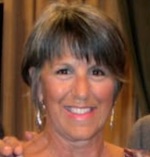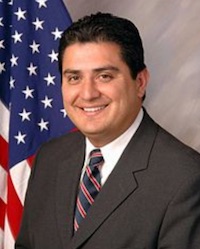Associazione USA su Tumore al Cervello condanna la 5G
L'associazione californiana sul Tumore al Cervello ha condannato la approvazione di una legge che implementa la telefonia 5G.
Ricorda anche come le votazioni nel parlamento californiano hanno dimostrato uno scarso vantaggio numerico e molti astenuti.
In particolare sostiene il dubbio della incongruità secondo cui i vigili del fuoco hanno ottenuto che lo loro stazioni non abbiano ripetitori di telefonia, mentre si accetta che chi abita di fronte ad una stazione dei vigili del fuoco può avere una bella antenna ?!
Ricorda anche come le votazioni nel parlamento californiano hanno dimostrato uno scarso vantaggio numerico e molti astenuti.
In particolare sostiene il dubbio della incongruità secondo cui i vigili del fuoco hanno ottenuto che lo loro stazioni non abbiano ripetitori di telefonia, mentre si accetta che chi abita di fronte ad una stazione dei vigili del fuoco può avere una bella antenna ?!
The Calif. Brain Tumor Assn. condemned passage of a bill Sept. 14 that allows proliferation of cell towers for the new 4G and 5G cellphone transmitting devices.
The Calif. Assembly voted 46-16 with 17 abstentions and the Senate voted 22-10 with 18 abstentions for a bill that forces local communities to lease their land to telecom companies for the new generation of cell towers that are needed every 5-10 houses according to some estimates. It now goes before Gov. Jerry Brown who could veto or not veto it.
CBTA said, "The burning question Gov. Brown should be asking himself as he makes a decision that could change California forever is this: If we exempt fire stations to protect firefighters, why are we allowing cell towers throughout neighborhoods, in front of preschools, schools, hidden in church steeples, on lampposts, utility poles and on most public buildings if these are too dangerous for fire stations?"
CBTA said, "The burning question Gov. Brown should be asking himself as he makes a decision that could change California forever is this: If we exempt fire stations to protect firefighters, why are we allowing cell towers throughout neighborhoods, in front of preschools, schools, hidden in church steeples, on lampposts, utility poles and on most public buildings if these are too dangerous for fire stations?"

Ellen Marks, Executive Director, California Brain Tumor Association
|
CBTA noted that the League of California Cities said the bill “unnecessarily and unconstitutionally strips local authority over public property and shuts out public input and local discretion by eliminating consideration of the aesthetic and environmental impacts of ‘small cells.’”
 Senator Ben Hueso Senator Ben Hueso |
The bill, the League said, represents “a major shift in telecommunications policy and law by requiring local governments to lease out the public’s property, cap how much cities can lease this space out for, eliminate the ability for cities to negotiate public benefits, the public’s input and full discretionary review in all communities of the state except for areas in coastal zones and historic districts, for the installation of “small cell” wireless equipment.”
Equipment Is Not “Small”
It further said, “Despite the wireless industry’s claim that the equipment would be ‘small’ in their attempt to justify this special permitting and price arrangement solely for their industry, the bill would allow for antennas as large as six cubic feet, equipment boxes totaling 35 cubic feet (larger than previous bill version of 21 cubic feet), with no size or quantity limitations for the following equipment: electric meters, pedestals, concealment elements, demarcation boxes, grounding equipment, power transfer switches, and cutoff switches.”
CBTA said 300 state cities have expressed strong opposition to SB 649, a bill designed to “fast track” the permitting of wireless and small cell telecommunications facilities in local communities. Mayors of six of California's largest cities have sent the AT&T-initiated bill’s sponsor, Senator Ben Hueso, a letter opposing the measure, said CBTA.
Said CBTA: “In spite of the telecom industry and SB 649’s sponsors selling this bill to underserved communities as a way to provide them the needed access to better wireless capabilities, The Greenlining Institute http://greenlining.org has come out in opposition stating, “Under SB 649, it is likely that providers will focus any service improvements on high-income areas. SB 649 in no way guarantees that low-income communities and communities of color will gain increased access to advanced communications services.”
CBTA Cites Studies
CBTA, headed by executive director Ellen Marks, issued a press release that cited several studies pointing to the dangers of pulsed, electro-magnetic radiation.
DNA damage in those living close to a cell tower was documented in a new study by Electromagnetic Biol Med. 2017 Aug 4:1-11: “Impact of radiofrequency radiation on DNA damage and antioxidants in peripheral blood lymphocytes of humans residing in the vicinity of mobile phone base stations.”
Source: Zothansiama, Zosangzuali M, Lalramdinpuii M, Jagetia GC.: Department of Zoology, Cancer and Radiation Biology Laboratory , Mizoram University, India.
“All of the recorded radiofrequency radiation (RFR) power density values in this study were well below the Federal Communication Commission’s maximum permissible exposure limits in the U.S. for the general population,” said Joel Moskowitz, Ph.D., University of Calif. Berkeley School of Public Health.
The study, said CBTA, follows on the heels of the major $25 million study recently released by the U.S. National Toxicology Program of the National Institutes of Health that found increased incidences of brain cancer, malignant tumors of the heart and DNA damage in laboratory animals from exposure levels the FCC considers "safe.”
The American Cancer Society’s statement on the significance of this new study was cited: “The NTP report linking radiofrequency radiation (RFR) to two types of cancer marks a paradigm shift in our understanding of radiation and cancer risk. The findings are unexpected; we wouldn’t reasonably expect non-ionizing radiation to cause these tumors.”
Firefighters Exempted on “Health Grounds"
Firefighters received an exemption in SB 649 based upon potential harm to firefighters as evidenced by a 17-year history, beginning in 2000, when a small fire dept. sued Nextel for health damages related to neurological impairment after towers were activated next to their stations.
The Int’l Assn. of Firefighters in 2004 called for an extensive study of the effects that cell towers have on those in firehouses. Link: health grounds.
INTERNATIONAL ASSOCIATION OF FIRE FIGHTERS
DIVISION OF OCCUPATIONAL HEALTH, SAFETY AND MEDICINE
Position on the Health Effects from Radio Frequency/Microwave (RF/MW) Radiation in Fire Department Facilities from Base Stations for Antennas and Towers for the Conduction of Cell Phone Transmissions
The International Association of Fire Fighters’ position on locating cell towers commercial wireless infrastructure on fire department facilities, as adopted by its membership in August 2004 (1), is that the IAFF oppose the use of fire stations as base stations for towers and/or antennas for the conduction of cell phone transmissions until a study with the highest scientific merit and integrity on health effects of exposure to low-intensity RF/MW radiation is conducted and it is proven that such sitings are not hazardous to the health of our members.
Study Showed Health Effects
Medical writer Susan Foster described the symptoms suffered by these firefighters, some beginning the day the tower was activated just sevden feet from their living quarters.
The men suffered from headache, insomnia, brain fog, getting lost in the same town they grew up in, sometimes forgetting protocol in routine medical procedures, mood swings and infertility.
In 2004 a SPECT brain pilot study was conducted on California firefighters who had lived in the shadow of a tower for over five years. SPECT is an imaging process that uncovers brain patterns.
The study, conducted by Gunnar Heuser, MD, PhD, found brain abnormalities in all six men, including delayed reaction time, lack of impulse control, and cognitive impairment.
IAFF Demanded Moratorium
As a result, Resolution 15, a collaborative expert/firefighter effort calling for further study and a moratorium on placing cell towers on fire stations throughout the US and Canada, was passed by the International Association of Firefighters (IAFF) in Boston in 2004 by 80 percent. Cell tower health concerns were posted on the IAFF website.
Said CBTA: “Through an exemption in the bill, California legislators accept the need to protect the health of firefighters, some of whom have measurable brain abnormalities following years of exposure to cell towers near their stations. SB 649 is in effect admitting that the devices that will be located in close proximity to homes and schools are likely dangerous. “
Said CBTA: “Through an exemption in the bill, California legislators accept the need to protect the health of firefighters, some of whom have measurable brain abnormalities following years of exposure to cell towers near their stations. SB 649 is in effect admitting that the devices that will be located in close proximity to homes and schools are likely dangerous. “
Calif. Finance Dept. Opposes Bill
The Calif. State Department of Finance has publicly declared opposition to the bill, says CBTA, quoting the Dept.
“While the extent of the potential mandate is unknown, Finance believes it can easily approach $1 million per year. Finance opposes this bill. While statewide uniform rules can help the expansion of new technologies, this bill goes too far by usurping city and county zoning authority for infrastructure development, and it potentially imposes reimbursable, state-mandated costs on cities and counties.”



Commenti
Posta un commento